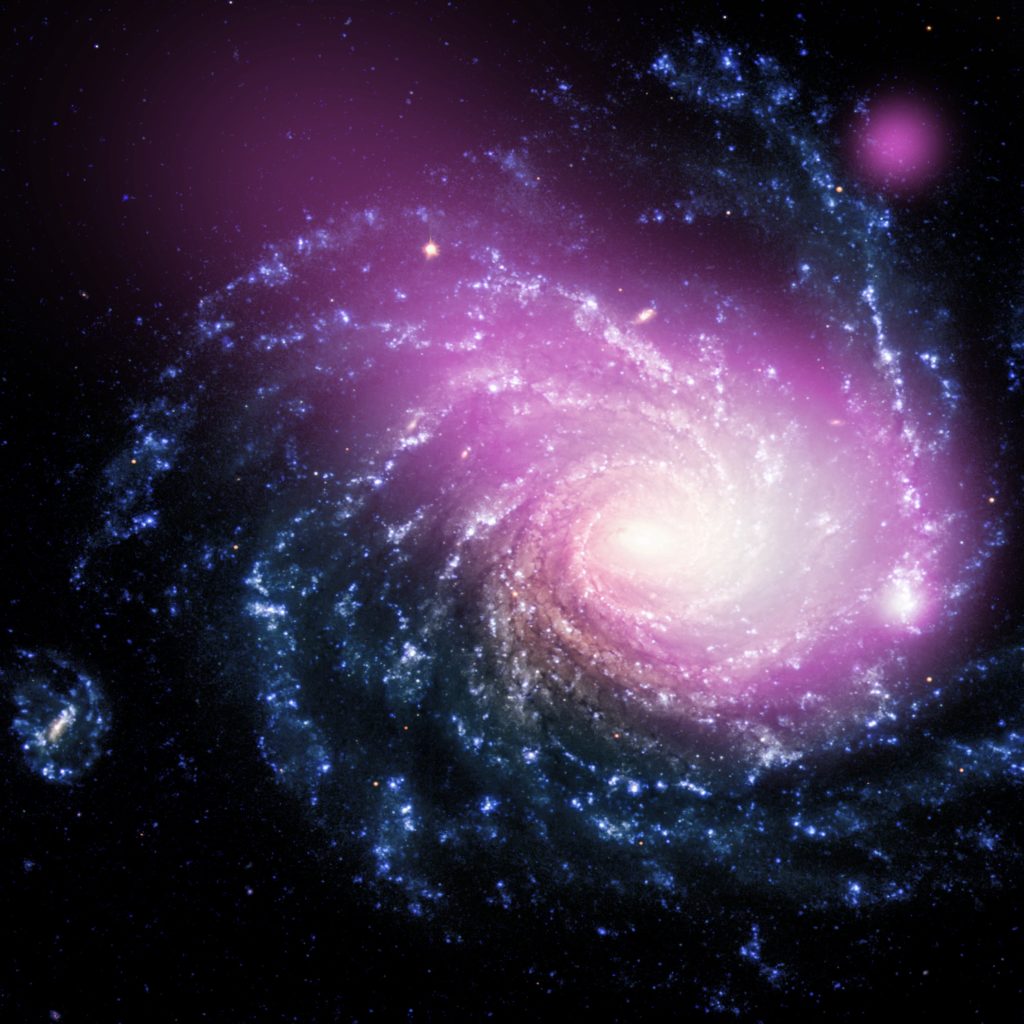Galaxies come in all shapes, sizes, and colors. Many galaxies are in the shape of spirals, including our own Milky Way Galaxy. The movement and evolution of these spirals is not well understood in astrophysics.
There are a few hypotheses. Originally, these spiral arms were thought to be rigid arms attached to the center of the galaxy. This would imply that every part of the arm rotates around the center of the galaxy at exactly the same pace, like a wood screw being driven into a board. The shape of the arms would also not change much. A competing hypothesis was that the galaxy should be considered a type of fluid, and the stars that make up the galaxy are just being carried through the fluid by gravity, like cereal pieces swirling in milk. We now understand the spiral arms of a galaxy to be a wave. In this wave, the stars are pulled closer together and then further apart, propagating the wave.
To observe this wavelike action, physicists have studied the individual orbital patterns of the stars. They found that they do not orbit the center of the spiral at the same rate. Therefore, the spiral arms of a galaxy are caused by a bigger disturbance that travels around the disk of the galaxy.
We understand that this concept should be how the spiral arms work. However, we don’t know how the arms initially formed, or the shape they will take in the future! The answers to these questions will tell us how galaxies change and grow, as if they are alive! It is unclear whether different types of galaxies that we see are galaxies in different “stages of life” or if they are just fundamentally different collections of stars. We will also be able to determine if spiral galaxies can turn into elliptical galaxies or if elliptical galaxies can become spirals.
This study researches the “perturbed disk” theory of spiral arms. When something is perturbed, it means it has been influenced in such a way that it alters its normal behavior. These scientists have investigated the theory of these “perturbations.” In this study, the researchers were hoping to uncover some facts about the stable evolution of the spiral arms to determine how galaxies following this model would evolve.
They did their analysis by looking at the individual orbits of the biggest stars living in the spiral arms in our current galaxy. They used these star orbits to determine the average rotation curve throughout the spiral arm to model the movement of the spiral arm with the rest of the galaxy. They used a modelling technique that combines many other techniques to see if they could be consistent with one another. This modelling has chaotic characteristics, meaning if the model was slightly off they would get unrepresentative results. Because of this, they ran the model with many slightly different starting configurations to account for the different chaotic situations.
First, it should be noted that all analyses that this team did was assuming a spiral galaxy with no bar. Some galaxies are barred spiral galaxies and some are unbarred. This is noted by the linear bar feature through the center of the galaxy. The Milky Way galaxy is a barred spiral galaxy, but the bar is small. Therefore, the results found in this study could apply to the features of the Milky Way galaxy, but away from the center.

When comparing their results to the observations in our own galaxy, they found that their model was able to represent not only the resonances (the oscillations that cause the stars to not fall into each other) but they were also able to describe the retrograde (reverse) motion of some stars. There are some places in the spiral arm where a few stars will move in the opposite direction of the rest of the arm. The motions of these retrograde stars in all previous theoretical methods use to describe spiral arms could not be represented or predicted. This shows that these scientists’ representation of the spiral galaxy is more accurate than all previous equations and explanations we had.
This study has showed us that on many occasions our theories, explanations, and models are true, but don’t always show the whole story. This conclusion found that the resulting model, which was an implementation standardizing ideas from a variety of existing models, more accurately represented pieces from each of these ideas. Therefore, no one of the used ideas was incorrect, but rather, just a piece of the whole story. This step forward is a great lesson in science, but also an exciting finding as now we can more accurately predict the motion of spiral arms in a galaxy. Thus, we are one step closer to understand what will become of our galaxy, and the lifecycles of galaxies throughout the universe.


